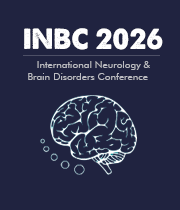Title : A new diagnostic perspective for alzheimer's: Salivary p-TAU?
Abstract:
In recent decades, research has attempted to identify biomarkers associated with Alzheimer's disease. Among the substances, the most prominent are beta amyloid protein and TAU protein, the latter of which can be described as total, phosphorylated, 181, 217, 231 and others. The investigations led us to seek to detect more specifically the levels of certain substances and the probable correlation with the preclinical, prodromal phases and the disease itself. The literature reports that some of these biomarkers can be found in plasma, saliva and cerebrospinal fluid, but the concentrations are often reversed and depending on the stage of the disease, it becomes more difficult to identify.
Our research group sought to identify tau protein as a possible salivary biomarker in 3 groups of patients, a control group and a group with Alzheimer's (different ages), trying to establish a positive correlation between salivary pTAU and Alzheimer's disease.
We detected higher concentrations of phosphorylated tau (pTAU) in patients with AD and slightly lower concentrations in elderly patients without Alzheimer's. We believe in the possibility of using saliva biofluid to aid in the diagnosis of Alzheimer's disease, with the advantages of low cost, non-invasiveness and ease of collection. Saliva requires special treatment, it is quite unstable and the proteins we bind can be inactivated after a few minutes in contact with room temperature. We are also seeking to develop methods to stabilize it permanently and safely and recently some progress has been made in one of the groups I work with. Further studies are needed to establish the ideal method and concentration of the salivary pTAU biomarker.




